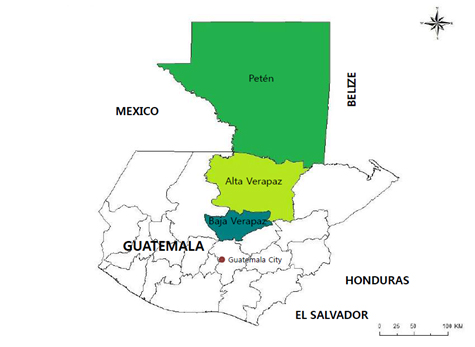CIAP Talk Tok
Agroforestry for enhancing livelihood of rural people and conserving natural resources in forestry area!

Director of Economic Development Department
KOICA
Since more than 60% of the world's poor live in rural areas, and the economic development of rural people contributes for national economic development, thereby most of ODA (Official Development Assistance) project aims to increase income of household in developing countries.
Agricultural production activities utilizing natural resources such as land, water, and forests are essential to increase income in rural areas. On the other hand, conservation of natural resources in rural areas is an important factor in coping with climate change. As SDGs emphasizes integrated approach for economically, socially, and environmentally- balanced development, agroforestry could be an answer for the issue.
According to FAO’s definition, agroforestry is “a collective name for land-use systems and technologies where woody perennials (trees, shrubs, palms, bamboos, etc.) are deliberately used on the same land-management units as agricultural crops and/or animals, in some form of spatial arrangement or temporal sequence.”

<SDGs Goals for Agroforestry>
To secure SDGs 2(Food security and sustainable agriculture), SDGs 13(Climate change) and SDGS 15(Land ecosystem), agroforestry can provide the benefits through the systems as follow:
- Agrisilvicultural systems are a combination of crops and trees, such as alley cropping or homegardens.
- Silvopastoral systems combine forestry and grazing of domesticated animals on pastures, rangelands or on-farm.
- The three elements, namely trees, animals and crops, can be integrated in what are called agrosylvopastoral systems and are illustrated by homegardens involving animals as well as scattered trees on croplands used for grazing after harvests.
Why Agroforestry?
A Project Case of Guatemala
Let me allow introduce an “On-Going” project of KOICA as an example for agroforestry. The project title is “Promoting and Developing Capacity for Integrated Agro-Forestry Systems Addressing Climate Change in Guatemala.”To improve small farmer’s livelihoods through optimized agroforestry system coping with climate change and value chain access, KOICA and the Government of Guatemala made an agreement to launch the project. Basically this project is designed under the KOICA’s mid-term strategy in rural development as follows.
[KOICA’s Mid-term Strategy (2016-2020) in Rural Development]
| Strategic Objective | Major Programs |
|---|---|
| 1. Sustainable production and Expanding Market Access | 1.Improvement of agricultural production infrastructure - Improvement of agricultural production infrastructure - Increase of agricultural crop productivity 2. Rural capacity building - Increase in farmers organization and rural household income - Enhance farm labor capacity - Improve project on agricultural extension 3. Enhancing agricultural marketability - Postharvest management - Expanding agricultural value chain |
| 2. Inclusive and Sustainable rural Development | 1. Inclusive and Sustainable rural development |
| 3. Conservation of rural production system and natural resource by responding to climate change | 1. Sustainable forestry development - Conservation of ecological reforestation and biodiversity 2. Conserving and restoring agricultural and fisheries ecosystem - Conserving agricultural and fisheries resources and biodiversity - Practicing sustainable farming |
This project is implemented by FAO and National Institute of Forestry (INAB) as governmental counterpart of Guatemala from2018 to 2021 with the budget amount of USD 7million. For the three regions (Alta Verapaz, Baja Verapaz and Peten, as

<Picture 1> Project Site Map of KOICA
According to the KOICA’s ‘Strategy Objective 3,’ “Conservation of rural production system and natural resource by responding to climate change”, it aims not only conserving the ecosystem but also making use of natural resource for generating income. In this context, the objectives of this project as follow:
- Objective 1: Enhancing institutional and producer’s capacity to sustainable forest management
- Objective 2: Invitation training
- Objective 3: Enhancing technical capacity of producers and institutional capacity to transition to sustainable climate smart agro-forest systems
Monitoring and evaluation on the project progress and budgeting will be carried out jointly by KOICA, FAO in collaboration with INAB of Guatemala regular basis (monthly and/or biannually). Indicators for M&E are as follow:
- Effect of the Incentive programs
- Area of land improved and managed with sustainable forest management, soil and biodiversity conservative practices or organic agriculture
- Income rate improvement of farmers group and cooperative implementing sustainable management, soil and biodiversity conservative practices or organic agriculture
Based on the development experience and capacity of forestry sector in Korea, it is necessary to cooperate with related institutions, such as Korea Forest Service, Rural Development Administration and KOICA.
Source: FAO website (www.fao.org)

